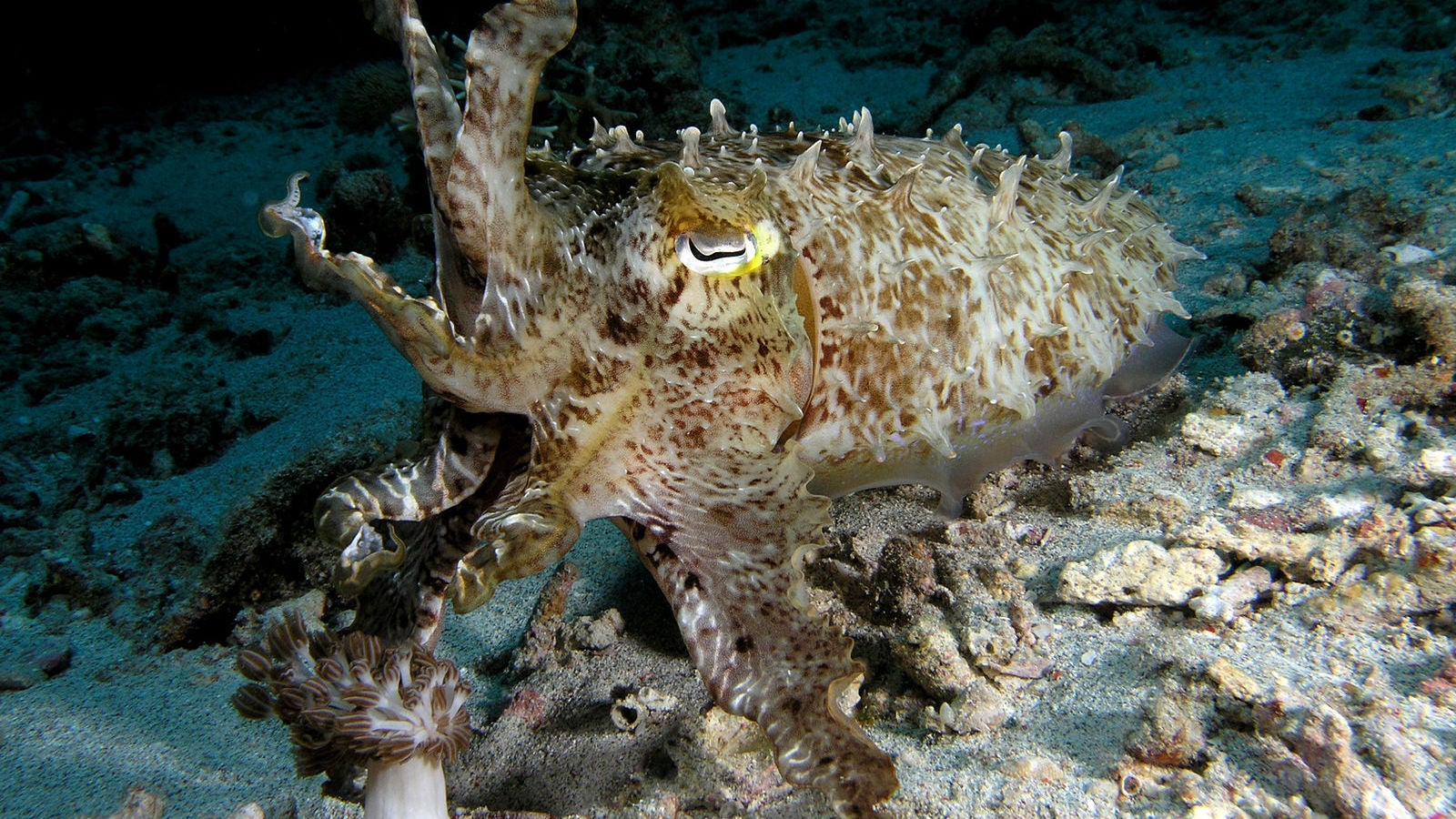
Source :- Octopus, squid, and cuttlefish can change their skin's colours, patterns, and textures in ways not seen anywhere else in the animal kingdom. You see what looks to be a clump of seaweed, and then it suddenly springs to life in the form of a retreating cephalopod. The changing of skin texture is a particularly impressive skill -- one that marine biologists are now a step closer to understanding.
A beautifully camouflaged cuttlefish in Komodo National Park. (Image: Nick Hobgood/Wikimedia Commons)
Cuttlefish (Sepia officinalis) have a unique muscular organ in their skin that, when expressed, exhibits skin bumps called papillae. These protruding, three-dimensional spikes can dramatically alter the shape of the animal, allowing it to imitate the fine texture of surrounding objects, such as the contoured surface of kelp and algae or the jagged outline of coral.
Scientists have puzzled over this ability for years, prompting an investigation by researchers from the Marine Biological Laboratory, Woods Hole Oceanographic Institute, and the University of Cambridge. Their results, now published in iScience, reveal some surprising things about cuttlefish and how they're able to pull off these amazing tricks of deception.
Researchers Paloma Gonzalez-Bellido, Trevor Wardill, and their colleagues explored the muscular and neural mechanisms that allow cuttlefish to express and hold their papillae in place. The researchers made their observations over the course of several experiments, including surgery on anesthetized cuttlefish. Further results were confirmed by electrically stimulating the stumps of the fin nerve and peripheral nerves. (The researchers noted that "all procedures carried out in this study comply with institutional recommendations for cephalopods and follow the tenants outlined by the Animal Welfare Act.")
Source :- gizmodo

No comments:
Post a Comment